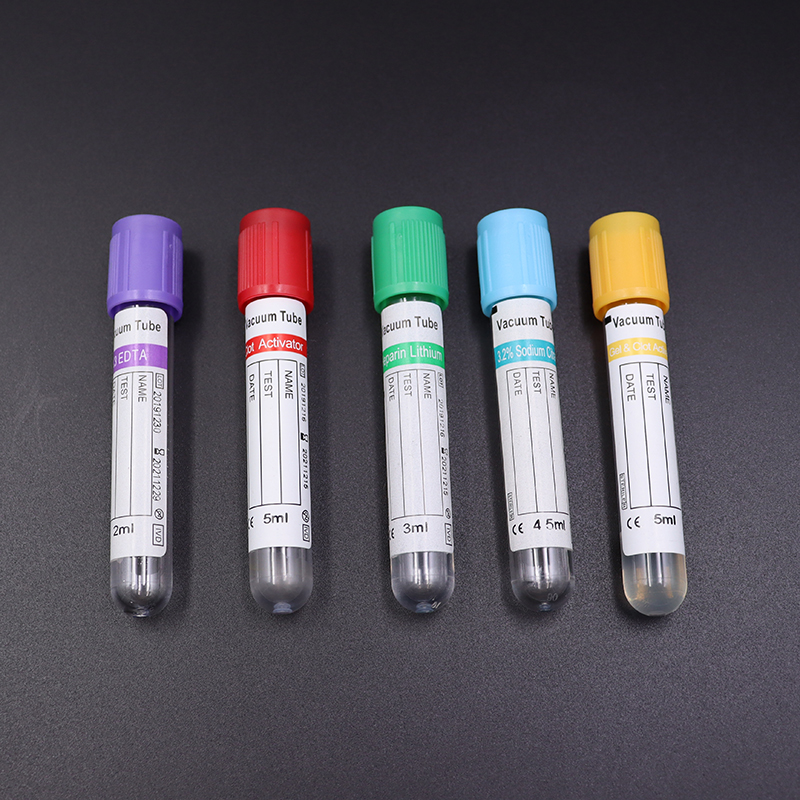When collecting blood, it is important to use the blood collection tube correctly. Shanghai Teamstand Corporation is a supplier and manufacturer specializing in the production of disposable syringes, blood collection sets, implantable infusion ports, huber needles, biopsy needles, blood collection tubes and other disposable medical products. In this article, we will take an in-depth look at the characteristics and applications of blood collection tubes and their corresponding additives.
Blood collection tubes are essential equipment in medical institutions used to collect and transport blood samples for various laboratory tests. These tubes come in a variety of sizes and are usually made of plastic or glass. Tube selection depends on the specific requirements of the test being performed.
One of the main features of blood collection tubes is their additives. Additives are substances added to test tubes to prevent blood from clotting or to maintain the integrity of the blood for subsequent testing. Different types of additives are used in blood collection tubes, each with a specific purpose.
One common additive is an anticoagulant, which prevents blood from clotting by inhibiting the coagulation cascade or sequestering calcium ions. This is critical for tests that require liquid plasma samples, such as coagulation assays, complete blood counts (CBC), and blood chemistry tests. Some commonly used anticoagulants include EDTA (ethylenediaminetetraacetic acid), heparin, and citrate.
Another additive used in blood collection tubes is coagulation activator or clot activator. This additive is used when serum is required for testing purposes. It speeds up the coagulation process, causing blood to separate into serum and clots. Serum is commonly used for tests such as blood typing, cholesterol testing, and therapeutic drug monitoring.
In addition to additives, blood collection tubes have various features designed to facilitate the collection and processing of blood samples. For example, some tubes are equipped with safety devices, such as needle guards or caps, to prevent accidental needlestick injuries. This is particularly important for health care workers who are at risk for exposure to bloodborne pathogens.
In addition, blood collection tubes may also have specific markings or labels to indicate the type of additive present, expiration date, and other important information. This helps ensure the tube is used correctly and maintains the integrity of the blood sample.
The applications for blood collection tubes are diverse and span all areas of medicine and diagnostics. In hospitals and clinical laboratories, they are used for routine blood tests, disease screening, and patient health monitoring. Blood collection tubes are also critical in research settings, where scientific research and clinical trials require accurate and reliable blood samples.
Overall, blood collection tubes are an important part of healthcare and diagnostics. Their selection, use, and handling play an important role in the accuracy and reliability of laboratory testing. As a professional supplier and manufacturer of disposable medical products, Shanghai Teamstand Company is committed to providing high-quality blood collection tubes that meet the strict requirements of healthcare professionals and researchers.
In summary, blood collection tubes are important tools in the field of medicine and diagnostics. Their properties, additives and applications are diverse and tailored to the requirements of different laboratory tests. Understanding the role and correct use of blood collection tubes is critical to ensuring the accuracy and reliability of blood sample testing. With Shanghai Teamstand’s expertise and commitment to quality, healthcare professionals and researchers can rely on their blood collection tubes to obtain accurate and consistent results.
Post time: Dec-27-2023


